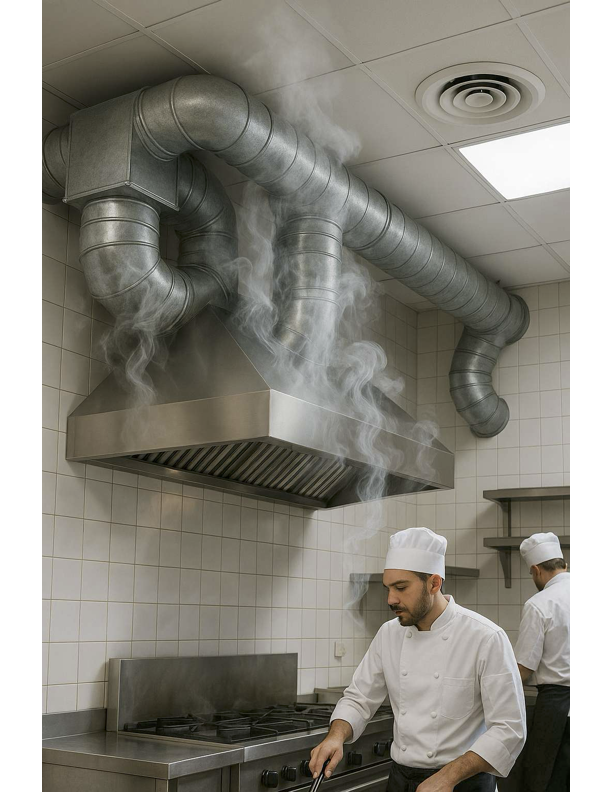Running a commercial kitchen isn't just about cooking great food — it's about controlling heat, smoke, grease, and air quality in a high-intensity environment. That’s where HVAC systems come in. They’re not an afterthought. They’re essential infrastructure.
The Real Job of HVAC in a Kitchen
In a typical office building, HVAC is about keeping people comfortable. In a commercial kitchen, it’s about survival. Without proper ventilation and airflow, the space quickly becomes unworkable — hot, smoky, greasy, and unsafe.
Here’s what a commercial kitchen HVAC system actually has to do:
-
Exhaust heat, smoke, and fumes. Cooking generates tons of heat, steam, and airborne particles. A kitchen exhaust hood and ductwork system pulls that out fast.
-
Supply fresh, conditioned air. Every bit of air that gets sucked out needs to be replaced. That means bringing in outside air, filtering it, and heating or cooling it to the right temperature.
-
Control grease and odors. Grease particles in the air can coat surfaces, clog ducts, and pose a serious fire hazard. HVAC systems use grease filters and sometimes UV or electrostatic cleaners to deal with this.
-
Keep the kitchen crew safe and comfortable. Too much heat and not enough oxygen can literally knock people out. Good airflow helps maintain a safe working environment.
Common HVAC Components in Commercial Kitchens
-
Exhaust Hoods (Type I and Type II): Type I is for grease and smoke; Type II is for steam and heat. These are mounted over cooklines and are the first line of defense.
-
Make-Up Air Units (MAUs): These bring in outside air to replace what’s being exhausted. They help balance air pressure and keep the kitchen breathing.
-
Ductwork and Fans: Needs to be durable, easy to clean, and fire-safe. Fans must be powerful enough to handle heavy-duty exhaust.
-
HVAC Rooftop Units (RTUs): Provide cooling and sometimes heating. These are often linked with make-up air units to create a balanced system.
-
Air Curtains or Barriers: Optional, but help keep bugs and unconditioned air from rushing in when doors open.
What Happens When It’s Done Wrong
Poor HVAC design in a commercial kitchen can lead to:
-
Heat overload
-
Negative air pressure that sucks in dirt from outside or from dining areas
-
Smells and grease drifting out into the restaurant
-
Sky-high utility bills
-
Health and fire code violations
It’s not just an inconvenience — it can sink your business.
Smart HVAC Design = Efficiency + Safety
The best kitchen HVAC setups are custom-designed based on the equipment layout, cooking volume, local code requirements, and building structure. It’s not one-size-fits-all.
A smart system will:
-
Keep air moving without creating drafts
-
Separate cooking and prep areas from dishwashing and storage zones
-
Automate fan speeds and air balance using sensors and smart controls
-
Run efficiently to save on energy costs
Final Take
If you’re building or renovating a commercial kitchen, invest in a serious HVAC setup from day one. It’s not just about code compliance — it’s about keeping the kitchen functional, your team healthy, and your business running smoothly.
Your ventilation system is just as important as your oven.

